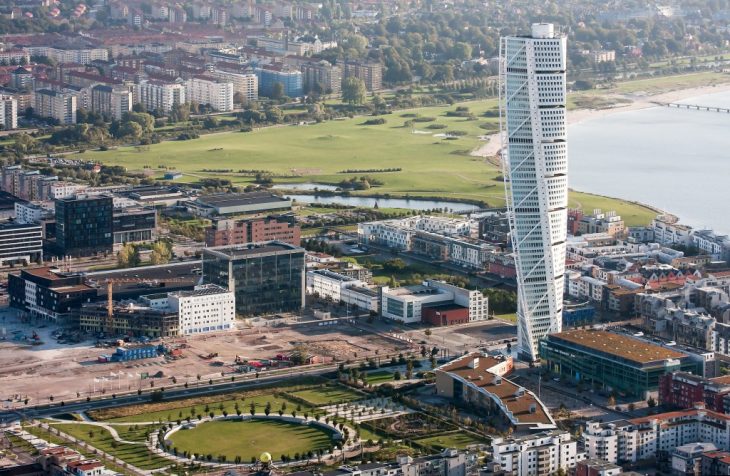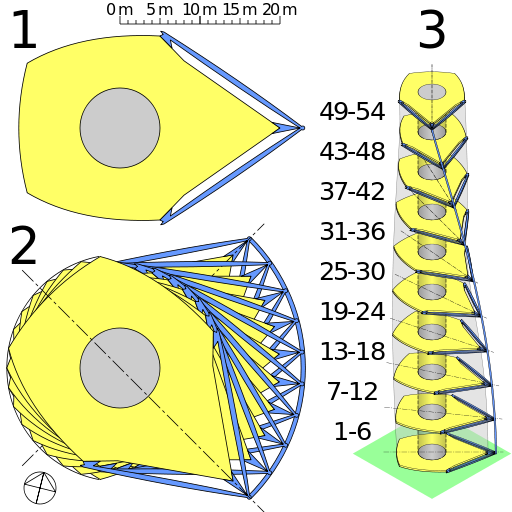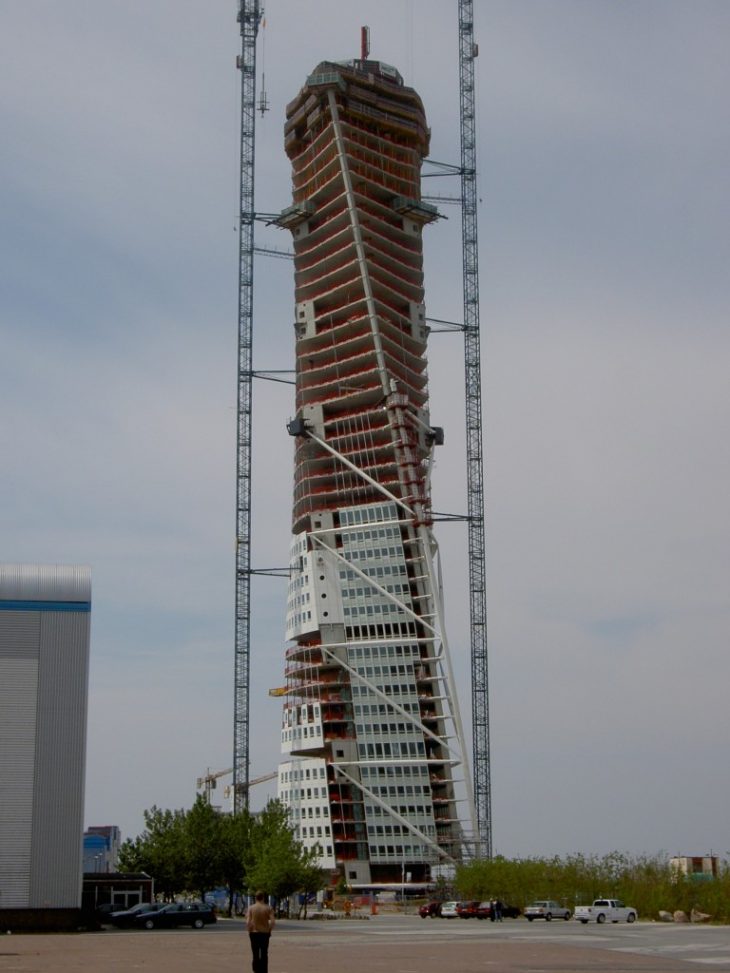
Bird’s eye view
TURNING TORSO
This exercise has helped develop necessary understanding of systematic functions. Their relation to set parameters and comprehensive results that are carefully controlled in design a building.
I first started using design with Rhino and Grasshopper – over a month ago here in IaaC. Grasshopper works with Rhino on evaluating, assessing and forming surfaces from logical interdependence of constants and variables. Along with flexibility to include many other functions. Algorithms derived from computation of logic and process to digitization of physical matter in a computational simulation.

Investigating structural variations with computational design for this building in Malmo, Sweden is a perfect example of decoding a facade. This was the first example of a turning tower to ever be conceived at its time of construction at the turn of this millennium.
Breaking down necessary code from analysis of building and study its floor plans for reference. Next is to put it in Rhino and start exercise in grasshopper. Floor distances and number of floors can be directly setup and controlled in Grasshopper, alongside of other variable parameters such as floor thicknesses and spacing of segments. With a series of steps defining geometry of the object, we use a cylinder command with parameters to twist in radians and to output as originally designed by Santiago Calatrava.
Applying surface with panels to bring up facade and subsequently share precise sizes of panels to vendors to fabricate and assemble.
– Left, Illustration of the general structure of the Turning Torso. (1) shows a typical floor plan, where the grey circle denotes the core and blue shapes denote the steel framework. (2) shows the way the nine segments fit around the core, and (3) is a diametric projection of the tower.

– surface and panelling, precisely calculated by tools like Rhino & Grasshopper.